Written by Alexandra Gilliams
During a trip last year to Venice, Italy for the Biennale, I wandered into the Palazzo Ca’ Tron, a Venetian Renaissance palace that was hosting the Future Generation Art Prize exhibition. I walked into a long hall adorned with decorative molding, marble, and large-scale Renaissance paintings. Two sections of the floor were covered in wood chips, and in the center of these sections were metal towers hoisting black computer engines and holograms of forests. Next to them, visitors swayed in place, their heads softly turning underneath bulky virtual reality headsets. Intrigued, I placed one on and, through sense of sight, touch, and hearing, got lost in an alien forest, guided by the haunting echo of an extinct bird… RE-ANIMATED was my first experience in one of the vast and beautiful virtual worlds created by Danish artist and New York City resident, Jakob Kudsk Steensen.
By collaborating with field biologists, NGO’s, researchers, and artists across all disciplines, Steensen creates ecological simulations that envelop the senses and elicit connectivity to an environment. They are played on VR headsets, in large scale installations, and through augmented reality on cell phones. After periods of research, he ventures into rural landscapes for months at a time, where he quite literally plunges in. He crawls through the environment with a macro lens, photographing and experiencing his surroundings, and returns to his studio where he places his scans onto 3D models that he sculpts in virtual reality. One of his most recent pieces, The Deep Listener, was commissioned by the Serpentine Gallery in London, where he studied the environment of the Kensington Gardens. He created an AR application for smartphones that can be used while walking through the park that heightens the sense of sight and sound, immersing the user more deeply into their surroundings.
I sat down with Steensen on Zoom to discuss the crystalline environment that he and his collaborators are developing during his residency at the Luma Foundation in Arles, France, as well as his plans for the future in the midst of COVID-19.
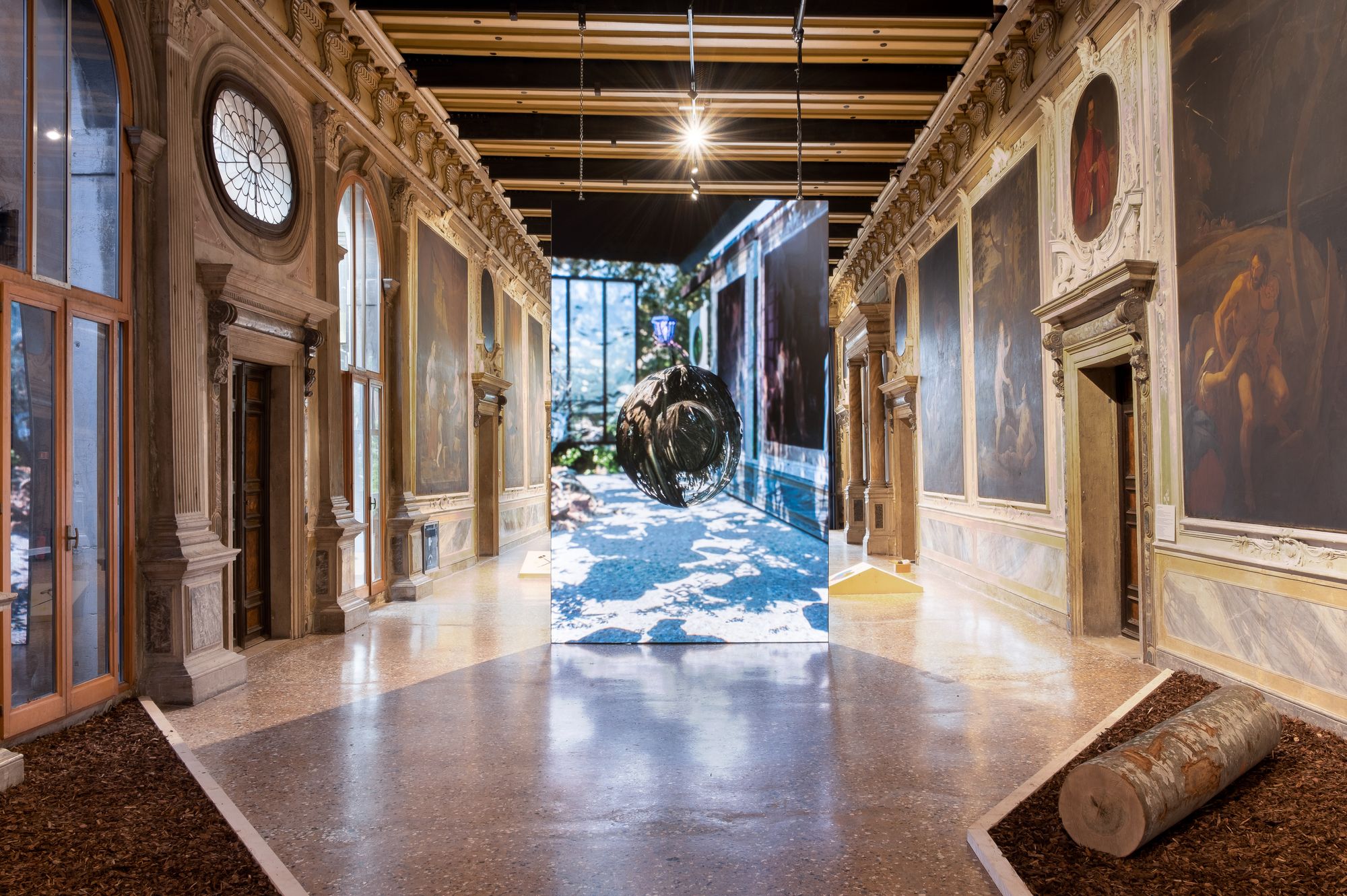
ALEXANDRA GILLIAMS: First off, how are you doing?
JAKOB KUDSK STEENSEN: I am doing okay. Fortunately, we are doing a project in the South of France with the Luma Art Foundation, we already had a residency. We were given a nice, beautiful flat next to this wetland called the Carmague.
In January, February, and March, I was 3D scanning different, beautiful crystallization processes in the wetland that are formed by algae, by bacteria, salt, water, wind - very basic life components. Right when we had the lockdown, I had already scanned the material and was entering a period of collaboration with different artists by building [the simulation] virtually. I have been coping with this situation by being able to really focus on my work as an artist and express myself, by working with these materials from the landscape, which is making me think a lot about the lack of physical touch and connection to a landscape, and what that means when you’re working with it virtually.
We’ve been quite fortunate that we’ve had this residency and this big project lined up, but I also had multiple shows cancelled, and I was sad about that. But we are happy about the conditions we are under. I spent three months going to the landscape, and using a big macro lens I took about three hundred photos of different small objects, such as salt crystals. From those photos, I reconstruct them in 3D, I then have a whole landscape digitized that way. I had all the source material, all of the photographs… I did my last shoot the day before the lockdown happened, we were capturing different sky lights. The lockdown happened right before I was set up to fully work virtually.
I work with different people in Kiev, in New York, and Canada, and we have a virtual collaboration platform where we all log in, connect to a virtual space, and build together at the same time. It was kind of this uncanny thing where, I was working with these basic bacterial processes in a landscape, documenting them, and working in this international network platform that I had built for my studio right when COVID hit. So there was this uncanny condition where I felt like I was already working on something kind of similar in theme, and the way that I am creating, to what’s happening now. It almost feels like the future kind of became what I was working with before.
AG: Could you describe what your daily routine has been like while being in confinement?
JKS: I sleep, and then I wake up. I have coffee, and then I go for a walk by the river. It’s really cool because there aren’t a lot of boats, so there are hundreds of these massive salmon and giant catfish that you can see in the river… they swim right up to the side. So I’m walking in the morning in the sun, around 10 or something, down this river, watching the fish, and then I go up to my studio; I have this big, beautiful sunlit room. I turn on my computer, I have some more coffee, then I link up with my collaborators. What they were working on on the East Coast in the states, they check in the evening, then it arrives in my landscape when I wake up, then I start working on it.
I just passed off the work to the sound artist who’s in Brooklyn right now. We were all supposed to be here together, but we can’t because of COVID. They were supposed to arrive in April through to the middle of May. There’s a sound artist that I work with who was supposed to record these insect and frog sounds in the landscape… we did some first recording with him in December but because he can’t be here now, what’s happened, which I find interesting, is that I have to connect with a lot of people from here and collaborate with them. We are using sounds from some natural history archives in the region, and there is someone that I work with on capturing sky lights, where you capture the light from the sky and you use that to create lights in the virtual landscape to get a texture of feeling - a kind of realism. He used to work on films in Hollywood and then moved back to France to this small town. It’s interesting because I am working with the local landscape and I am collaborating to a greater extent than I did in the past with people from this area. it’s making me think that in the future, I might do a project where the landscapes I work in, I will work with people from that region. They might know or have certain perspectives on an area that I don’t have.
AG: How did you first become interested in technology, and can you describe what drove your choice in pursuing the arts?
JKS: I was quite fascinated by video games when I was a kid. When I was about 13, I got this video game called Unreal, and it came with a software that you use to create the game, so you can modify it. As a teenager, I started modifying the games that I was fascinated by. The first thing I wanted to do was be an animator for video games, but then I did the test for animation school and I had to draw the same character seventeen times, and I just immediately knew that this was not the direction for me. From then, I wanted to be an artist, to go to an art academy, create art, so I started painting a lot in the beginning. My paintings were inspired by virtual landscapes, but then at some point six years ago, instead of creating virtual worlds and taking pictures of those landscapes and painting them, I decided why not just build them?
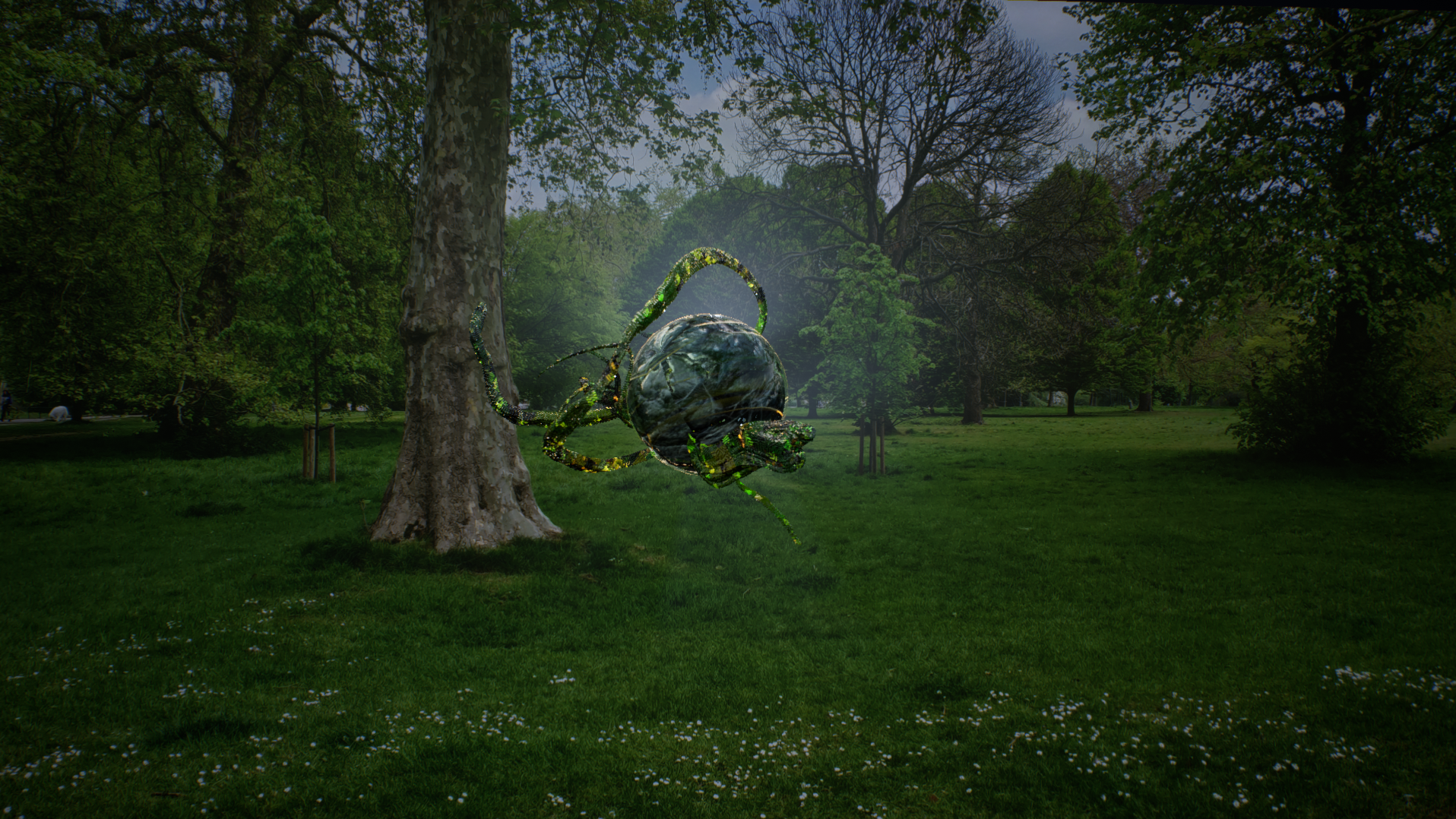
It’s been a lifelong passion for me. What I grew up with first as a kid was more entertainment, gaming was more socially stigmatized than it is today, it wasn’t considered a mature art form, but there were artists making work about the culture of video games, the aesthetics of video games, but not many artists were diving deep into the technology used to create video games and doing something different with it.
That’s how I really started professionally, doing projects, showing in museums, getting commissions… That’s when I really chose to focus as much as I could in reaching the core of my passion, and that is going to landscapes, digitizing material - kind of like an e-material form of extraction, where you are not taking anything physical, but sounds, pictures, virtual textures from reality - and using video game software to create something that doesn’t really have anything to do with video games but it’s more responsive, it’s alive. It has composition, color, sound, movement; there’s a lot of aesthetic, beautiful elements of that technology. I’ve been fascinated with this since I was a kid, but within the past few years I have become kind of self aware of why it is fascinating to me...
"Making video game worlds without any video game element - no guns, no action - just poetic landscapes".
AG: You have spoken about how climate change is a central theme in your work, but human emotions in relation to nature take precedent, and that you refer to yourself more as a romanticist than an activist. I’m interested to know what kinds of emotions you hope to evoke with your pieces, and what they mean to you in relation to nature and the climate crisis.
JKS: More or less, I am very drawn to a sense of immersion - immersion in my craft, immersion in the virtual world, and immersion in actual landscapes - there are these three elements that I work with where, for me, to create an artwork, I need to be very physically present in a landscape, sometimes for over several months. I have a suit that protects me from mud, and I crawl through mud to do photo scans - it’s very physical. There is something emotional in that - a sense of being in your own mind in a very busy time. I feel like, with social media, life today is very busy and you are bombarded with thoughts, so that creates a way of being, emotionally, where you could be constantly distressed…
When you are in a landscape alone, for months at a time, or with a couple of people, you enter into another emotional state, and that’s the state that I am interested in working with - this sense of depth and focus, and also this sense of solitude or, looking for something that I feel like is lost. What is lost is, because of climate change, a lot of ecosystems, habitats, there is a lot of destruction happening on the planet; a lot of species are being lost. At the same time, I think being in this emotional state with a sense of solitude or focusing on one thing for three months in a specific location, is also being "lost."
For me, all of these narratives are important, but in the end what drives me as an artist, rather than an activist, for example, is that I am driven by working with these mental states that are provoked through narratives and nature. So each project that I do I start in a specific landscape or with a specific story. I did a project with an extinct bird, and the project kind of revived that bird back to life. That was the last larger project I did, similar to what I am doing in France now. I think more and more about how the stories I work with in nature can also tell us stories about things that don’t have anything to do with nature, but is drawing a parallel.
The project I am working on now is about bacteria and algae in the wetlands in the South of France, I am making the piece in a way where I am thinking about how that story in this specific landscape can be relevant in general, and how there are these invisible, organic processes that control all of life; this is what COVID is doing right now, too. I’m not making a work about COVID, it’s the same project I had planned to do, but I am thinking more consciously about how the narrative, or final form, can be about seeing all encompassing, otherwise invisible organic processes that shape life, in an entire landscape. This is how I typically work, which is why I think that I am equally or more, working with some kind of intuitive or imaginative approach to a landscape and the emotions that it evokes - some
"...sensations which reach beyond what they are in nature."
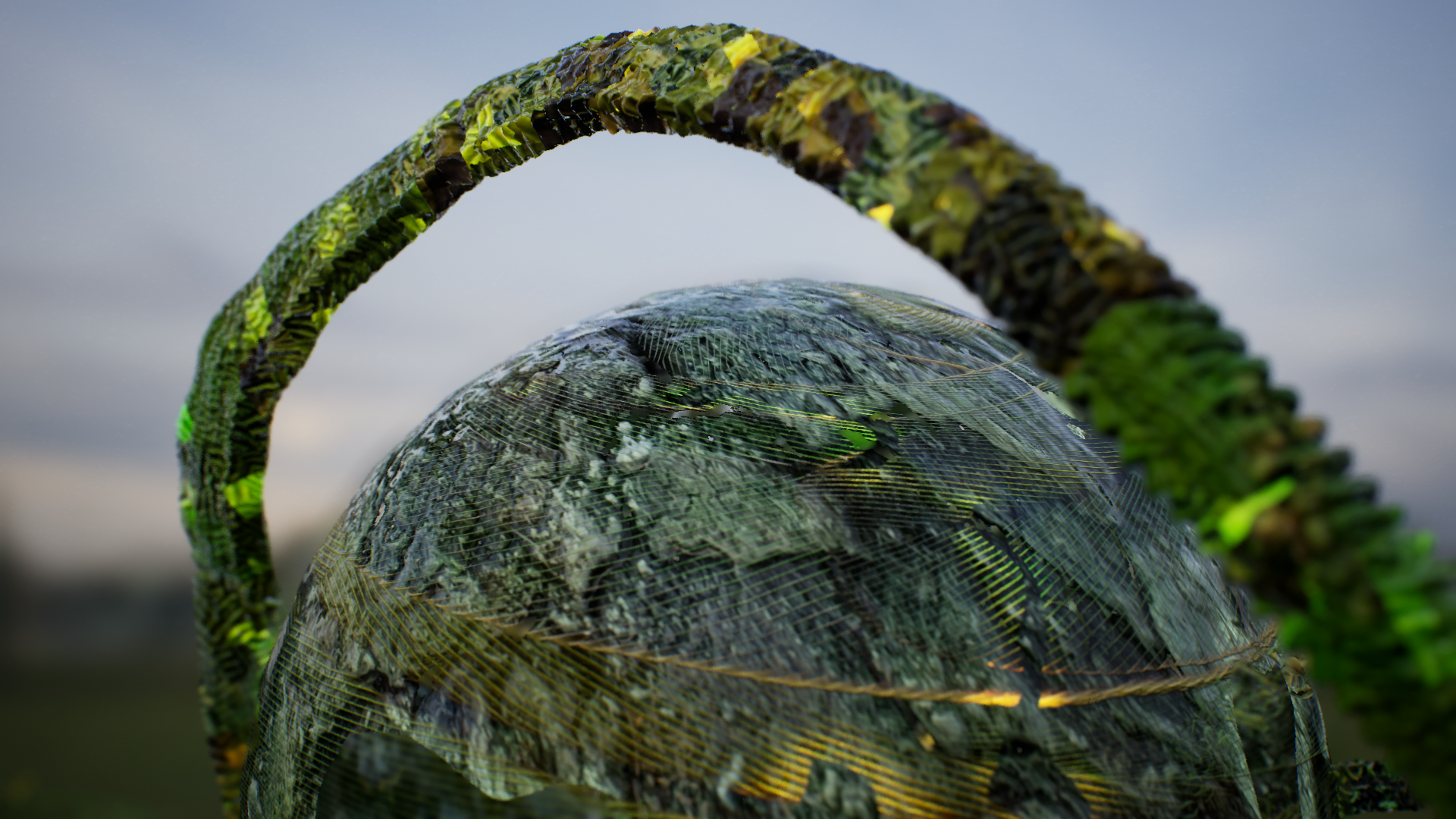
AG: In your simulations, you augment different parts of certain plant and animal species, such as enlarging leaves or, as in your recent piece The Deep Listener, slowing the calls of birds in order to alter the viewer’s senses. When I saw your piece RE-ANIMATED during the Venice Biennale, I felt as though I was teleported into the middle of a forest that could have been on another planet. The installation was complete with the floor covered in wood chips which made me feel as though I was walking in nature. I remember the peculiar impression that I had from the angle in which I was viewing the simulation, which was very low, making the forest seem larger than life. What kinds of sensations do you hope to conjure up within your simulations, and how do you hope that these sensations might resonate with the viewer afterwards?
JKS: I think I hope to invoke a sense of curiosity that I kind of feel like you had when you saw the work. I hope to not just make a statement or story about something, but evoke a sense of curiosity for different stories, natural histories that might be overlooked or that people don’t think about. Within those, I am playing often with scale. The relationship between, let’s say, a human scale, feeling like you have a horizon, you have controlled space, you have architecture in a virtual landscape that you can very much relate to. And then, slowly over time, you morph into a different scale, where suddenly you are the size of a mushroom or an insect. But I do this transformation so subtlety and gradually over time that you don’t really think about it until maybe all of the sudden, you are like, wait, am I really that small looking up at a tree, when before I was looking at those trees? But I never do it as if it were a cinematic cut where it would be from a canopy to an insect scale.
Because of these simulations, I can change perspectives, sizes, speed, everything. The speed of water running down a leaf, it could be realistic, but all of the sudden, almost be in slow motion - and that is just one detail in a landscape. The leaf is a real photo scanned leaf, but I might have increased the value of how reflective it is to the sun by about 20 percent, so it becomes a little uncanny, because now it’s reflecting light around it in a little, weird way, but it’s still a photo scanned leaf. I try to play a lot with these different physics that we normally use with our senses to understand where we are in a landscape, like light, humidity, the wetness of an object or if it’s dry, does something dissolve or does it feel hard and solid… These are kinds of material properties that I spend a lot of time morphing in my work, these kinds of real-time game engine simulations where those variables can just slightly change for anybody trying one of the artworks.
AG: I remember from RE-ANIMATED emerging from a cave into a forest where a sharp, seemingly artificial blue light was almost blinding, with some kind of a hovering aircraft in the distance. Nature surrounded me, and was moving in an unnatural rhythmic motion - tree branches swaying, leaves rustling, flowers blowing… but all in-sync. There were these small metal cages resembling mosquito traps hanging from elongated, twisted wood, and in the distance, a plant with branches appeared intertwined with a neon blue light. Though you create realistic simulations of forests, would you agree that there is an element of science fiction in your work?
JKS: Definitely, I do a lot of research for my projects and then I think about how can I convert that research; It’s inspiration for me as an artist. Then I take those literal perspectives and transform them.
I am very inspired by a lot of science fiction writers. I think that some of the most interesting science fiction has an element of truth, and often for a lot of the writers I like, such as Jeff VenderMeer, he writes this wild ecofiction where everything is kind of morphed together into these muddy constellations, and he lives in Florida. There is a relationship - you kind of need to go out and see the Everglades in order to be able to write that way. I follow the same principle. I think more and more now, with the project that I am doing here, it’s becoming more abstract and emotional, but to create that, everything that I’m working on now here in France, I still need to be in the landscape for a long time to see things I wouldn’t have seen before: textures, sounds, natural elements… so science fiction is a big inspiration.
AG: What direction do you envision your work moving towards post-confinement, and have you considered how you might display or diffuse your pieces in a different way?
JKS: Definitely, I’ve shown a lot of VR the past couple of years because I love the kind of attention it can bring to people. You put on a headset - there’s no cell phone, there’s no one around you - you are focused, and I think that’s a state of mind that we are kind of missing with digital mediums today.
But, in a public space now, it’s going to be impossible to show VR and share headsets. It’s not happening. So that makes me think, since they are virtual landscapes and simulations, they can become many other things too, you can play the work regardless of if you have a headset or not. You can send out those signals to many other things - speakers, screens, projections. I’m gonna start taking my worlds and creating these larger, immersive, physical spaces, and at the same time I’m thinking about how I can fully distribute my work online. Something I would like to do more is to work with institutions, foundations, and platforms to make work fully available for people to download and then also have the larger, immersive installs, but those wouldn’t have VR. For people who have VR headsets, they can download it from home, or on their phone, like The Deep Listener.
"COVID is kind of forcing me to do something that I’ve been wanting to do for a while, which is crystallize the relationship between the capabilities of the virtual as something that can be distributed to people,"
but also as something that can create these pulsating, interactive spaces, so I’m gonna kind of take those two forms to further extremes, and do less in between them. But it is kind of sad because this piece I am working on right now was meant to be for eight people who enter this virtual landscape together as a kind of social or ritual experience in the museum, so that element I have to completely move to make something different. Something I’ve been doing a lot actually are artist meetups in VR. Yesterday we were 45 artists meeting in a virtual space - you put on a headset and you have a virtual avatar and everything - and I think I’m going to start embracing these fully virtual formats more, and how they can connect to the specific landscapes.
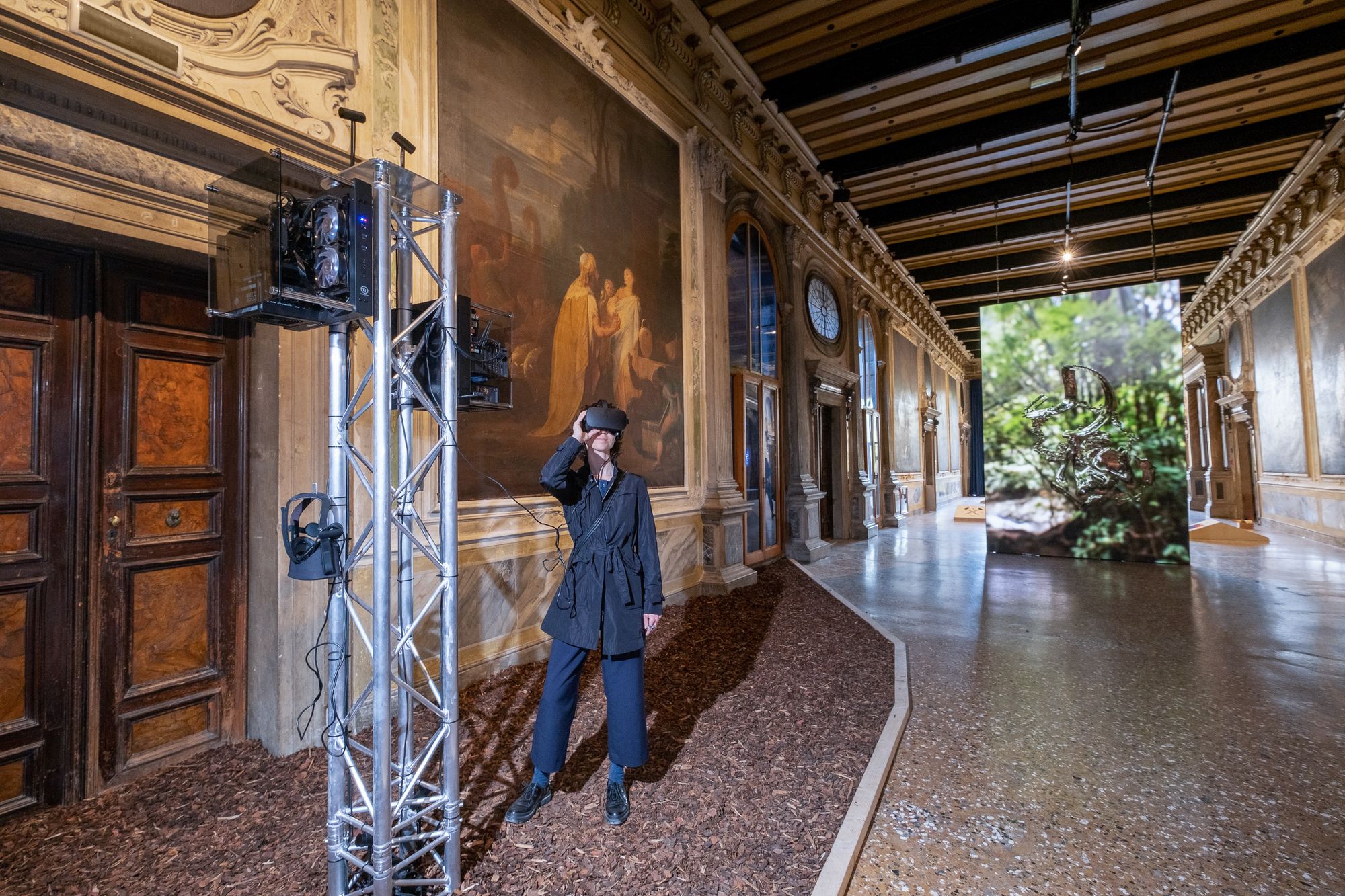
AG: So not necessarily just for people with VR headsets - this could be something that you could also download, say, on your cell phone or laptop?
JKS: Yes, I would like to make it as accessible as possible. But for people who have a headset, they can still enter - this work is made for VR, the first one will be for VR, so people who have the headset can do it. But after that I will begin working on a version for a laptop like a first-person video game, you explore the landscape, it’s a very different design… sitting down in front of a screen, moving physically everything responds to you. So, I have to redo a lot of elements but suffice to say that I’m thinking a lot about how in the future I will go to a landscape, work there, work with the museum to make an installation and as an extension of that installation there are parts of that world and work that is entirely designed for a much wider distribution and usage for people to experience the work. Similar to music or apps, virtual books and so on. I think institutionally it’s bound to happen too, because so many artists are interested in this more and more, and there’s no reason you should only show these ambitious virtual artworks in a museum, when they can be so much more.
AG: Do you think you’ll continue to make the same type of work post-confinement? By working in nature so much, do you think that your process will be different once this is over?
JKS: Definitely, I will be traveling a lot less which I enjoy, so that part is nice. What the project here has made me think a lot about has been that there are these imaginary, alien worlds everywhere. I’m working now in a super-local landscape, when you first look at it, it looks flat and there’s not a lot happening, but then when you look from a really small scale you see all of these amazing, alien transformations by salt and algae, so it has really made me think that I could be in one town and do the same work in a backyard, or anywhere really, anywhere you can find these stories. They don’t have to be these big stories of extinct birds and exotic islands; you can find this kind of inspiration anywhere.
Also, there is a strong sensory element and a discursive element to my work. What I’m really feeling that is more relevant is the stronger, emotional, sensory experiences, the sense of calm, the sense of being closely connected to the art you are experiencing. In my work, there are textures, sounds, it can be anything… these very basic, essential capabilities of an artwork is more of what I feel for myself, and that is what I am mainly interested in right now. So kind of cutting it to the art of the artwork, more than the politics or the discourse, or the narrative of it, and make it even more basic, sensory, imaginative… That’s how I’m feeling now and looking at doing things.
AG: How long have you been living in New York City, and what is your opinion on it?
JKS: I lived there for six years. I am so happy for having been there, I met so many great artists. But I feel lately, in the past few years - with rent and commercialization and everything - that a lot of the art that I started to be inspired by was rarely in New York, I did all of my projects outside, to create artworks I went somewhere else, to find inspiration I went somewhere else.
I feel like I am becoming more and more interested in ideas, art, aesthetics, thoughts, way of living, in local areas, and how different local areas can connect globally rather than trying to think that everything global is centered in different cities. This art foundation that I’m working with right now, Luma in the South of France, that’s kind of their mission - to support local design, biology, art in Southern France, but they have a powerful international network, so they are still connecting it to other places. I’m thinking a lot about archipelagos, you have different islands, they all still trade and share things, but they are still relative individual entities.
I think with COVID, this is a system that many people have been talking about supporting and moving towards in our culture, and I am thinking that we will see more action behind these words now because of it. I think most likely, in the immediate future, you will have a better life if you live outside a major city. The situation that produces a virus and viral activity like that, is created by this global system where people need to travel a lot, really fast, to clustered places. It’s a bit symbolic I think; it’s such a sad, hard situation but it’s also a biological fact that this is not a sustainable way of life for our planet, and we are seeing the repercussions of our own behavior as humans through a virus. I love New York, I love all my friends, I love all that it has given me as an artist, but more and more I am looking towards local places and how they can be connected internationally.
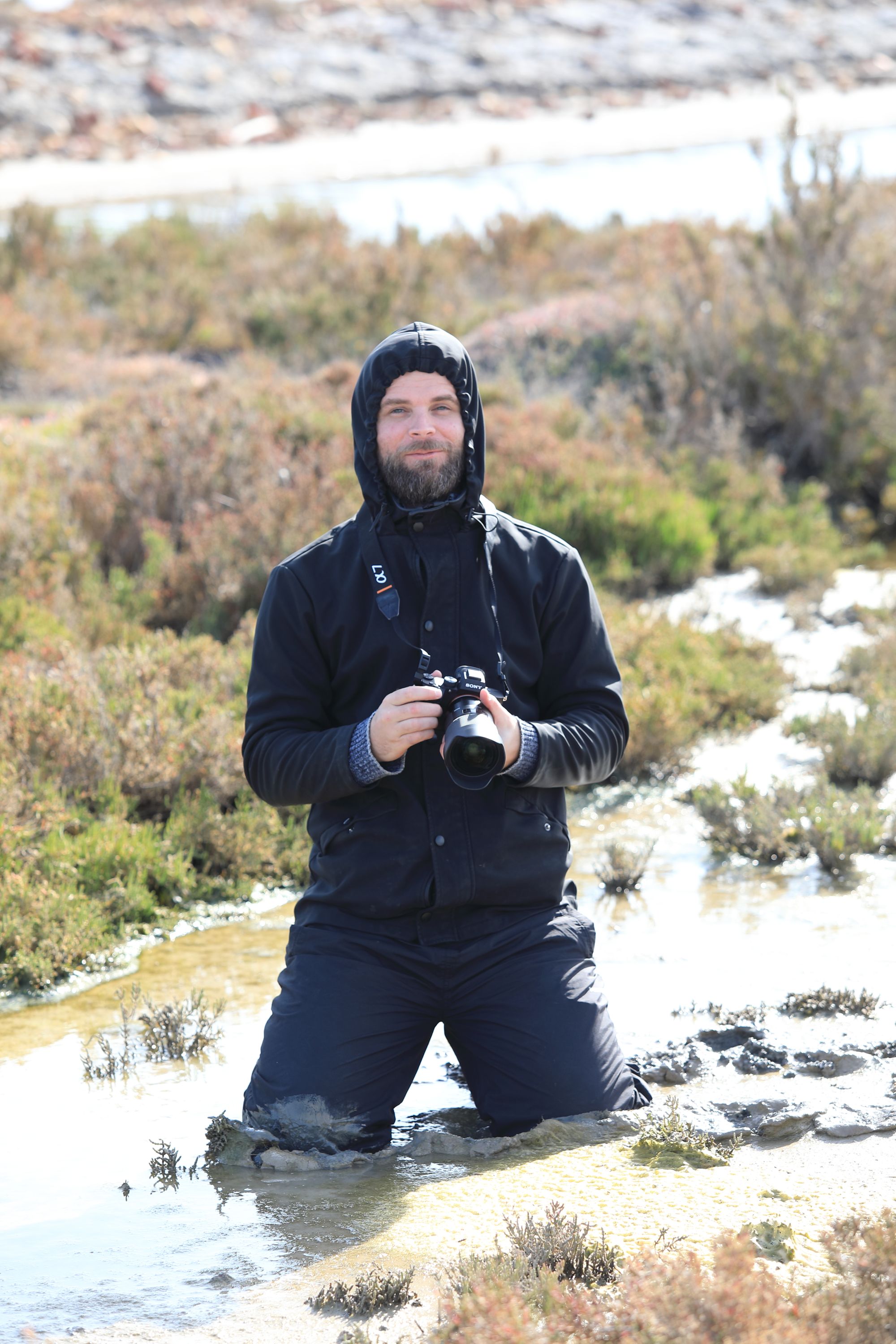
AG: Has your residency been extended because of the virus, and for how long?
JKS: It has been extended, we’ll see for how long…
AG: What five things have been the most therapeutic or inspirational for you during confinement? This can be music, films, podcast, television shows, food, drinks, etc?
JKS: Fortunately in France here, we’ve been able to walk outside so, looking at the salmon in the river everyday.
The VR meetups I have been doing regularly - I know a lot of artists that work in VR but I have never been with that many people with headsets on in online spaces. That has been really fun.
I sleep really long, that has been really nice. Lots of sleep.
Wine. Good, French wine.
I haven’t really played a lot of video games for many years, but I have been playing with friends - old friends, from high school - online a couple of times a week and that’s been really been really fun. Because of those games, because they are social landscapes, I have been connecting with friends that I used to be close to before I moved to New York and became an artist, and we’ve reconnected over that.
Check LONYC weekly our take on: photography, music, film, food, fashion, politics, and creative writing. Follow us, feel the vibe @laidoffny.
Stay up to date with us for when Jakob Kudsk Steensen's next NY show is!
Get to know Alexandra better, @alexandragilliams for all her latest creative endeavours.
*Thumbnail Image Credit: Jakob Kudsk Steensen, The Deep Listener, 2019. Courtesy of the artist



